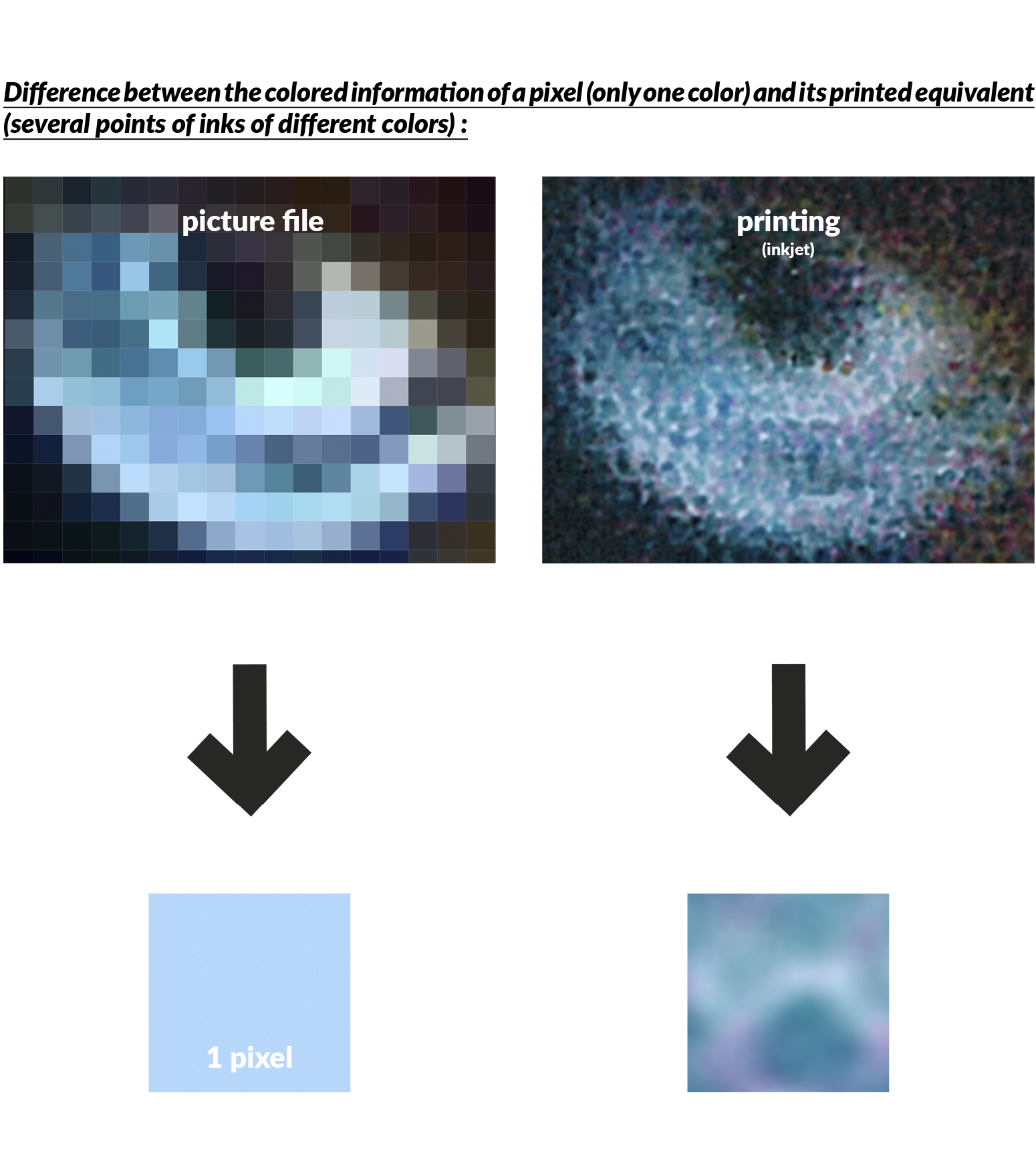Help / Writing resolution
Printing renders each pixel of your file by a set of printing dots, these dots are made up of ink deposits of varying size. To transcribe the colour of a pixel, the printing system will need to deposit several dots (drops) of ink of different shades.
This difference in the description of the image by the printing system explains the difference in the notion of file resolution (explained in the Resolution/File Quality tab) and writing resolution. The writing resolution (also called print resolution) corresponds to the density of ink dots (drops) per unit length.
This writing (or printing) resolution is not equivalent to the file resolution. These two quantities, although close, are not equivalent.

In summary :
The density of pixels per unit length making up your digital image file. .
Density of ink drops per unit length deposited on the print medium to render your image.
The two notions are not equivalent and do not occur at the same time in the graphic chain :
In the file to describe the details of your image more or less precisely.
In the printing system to transcribe the pixels of your image file into drops on the paper (or other support)..
Find the definitions of the technical terms used on this page in our glossary.